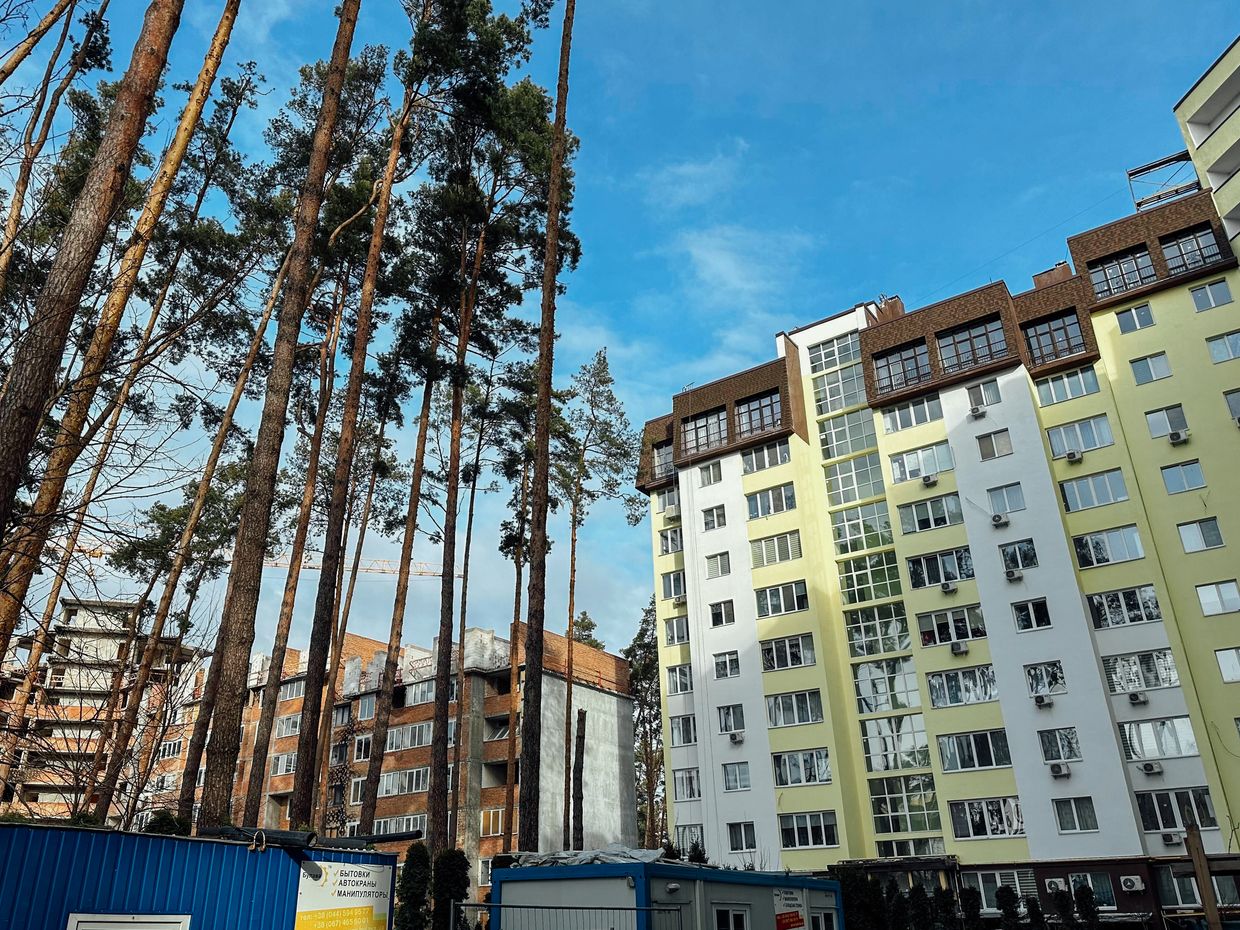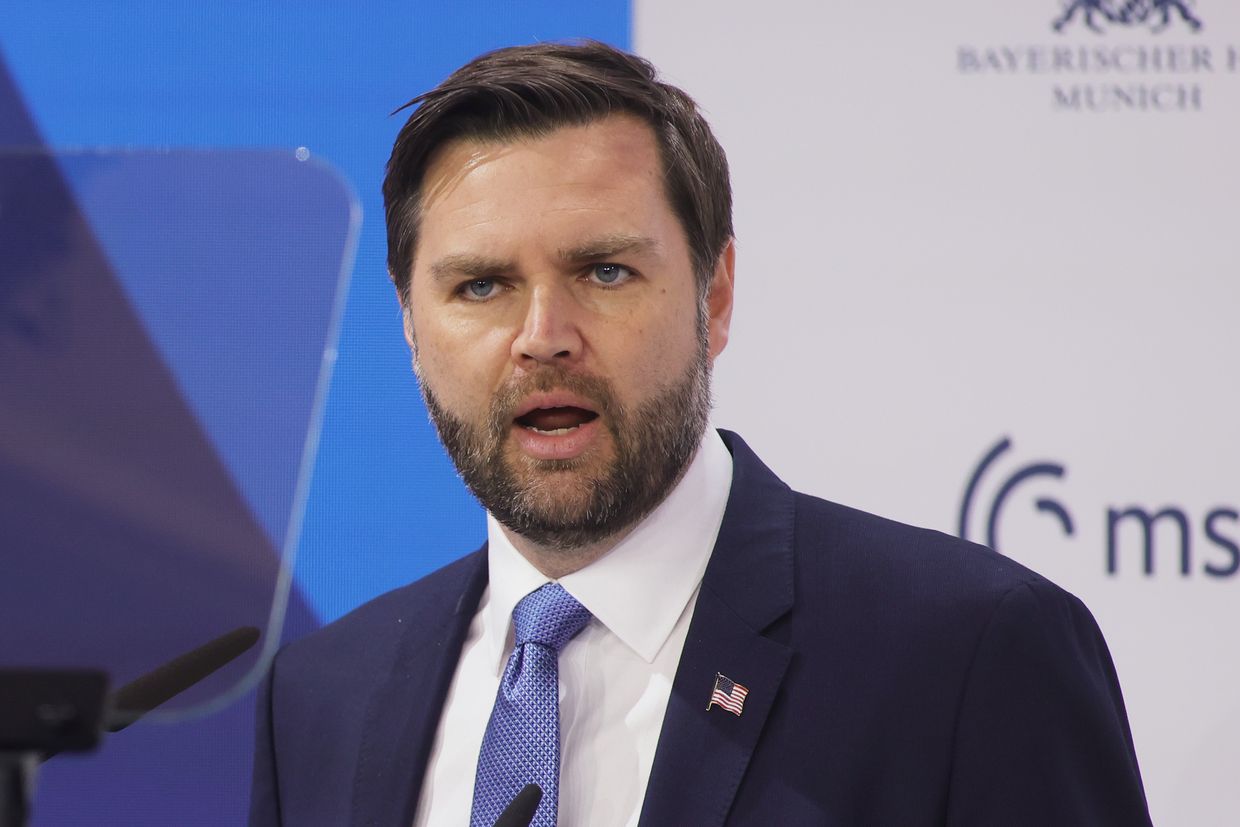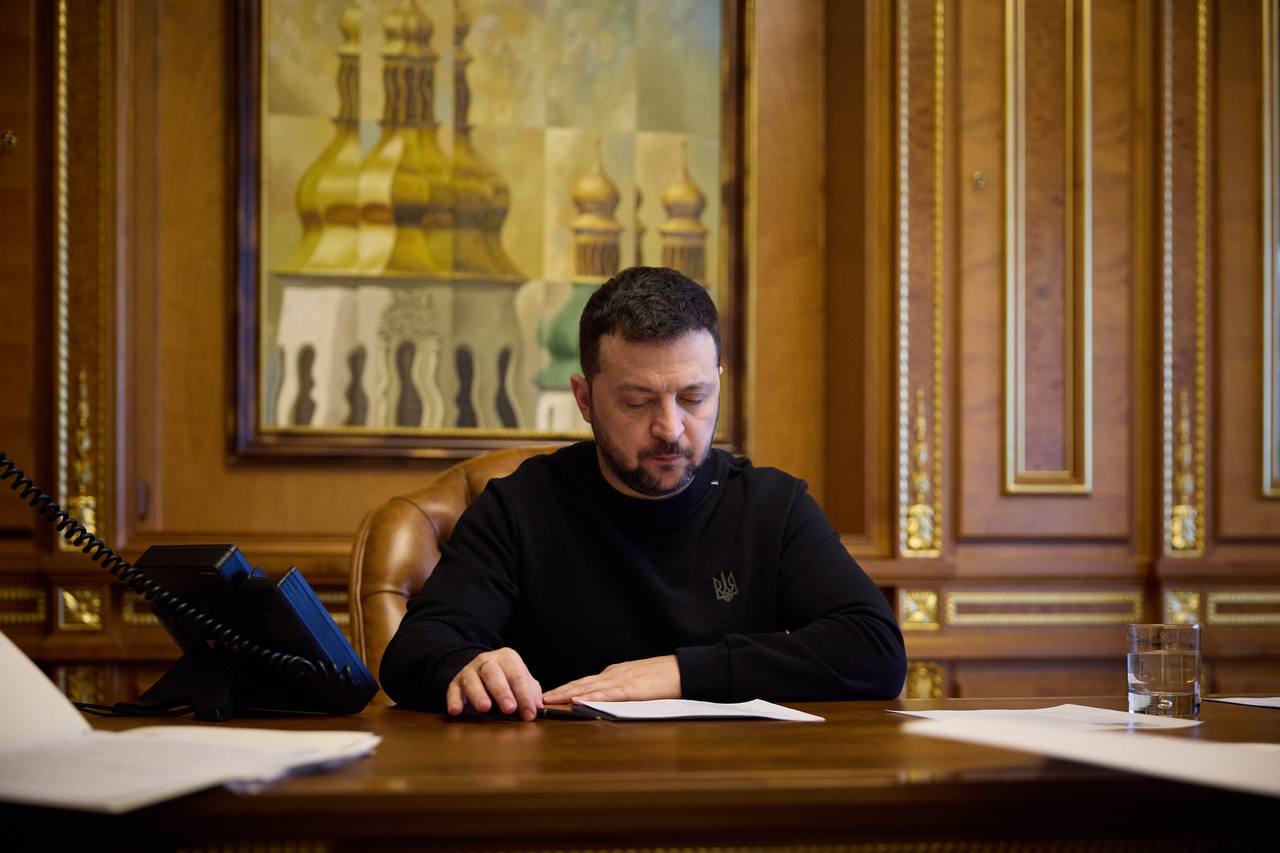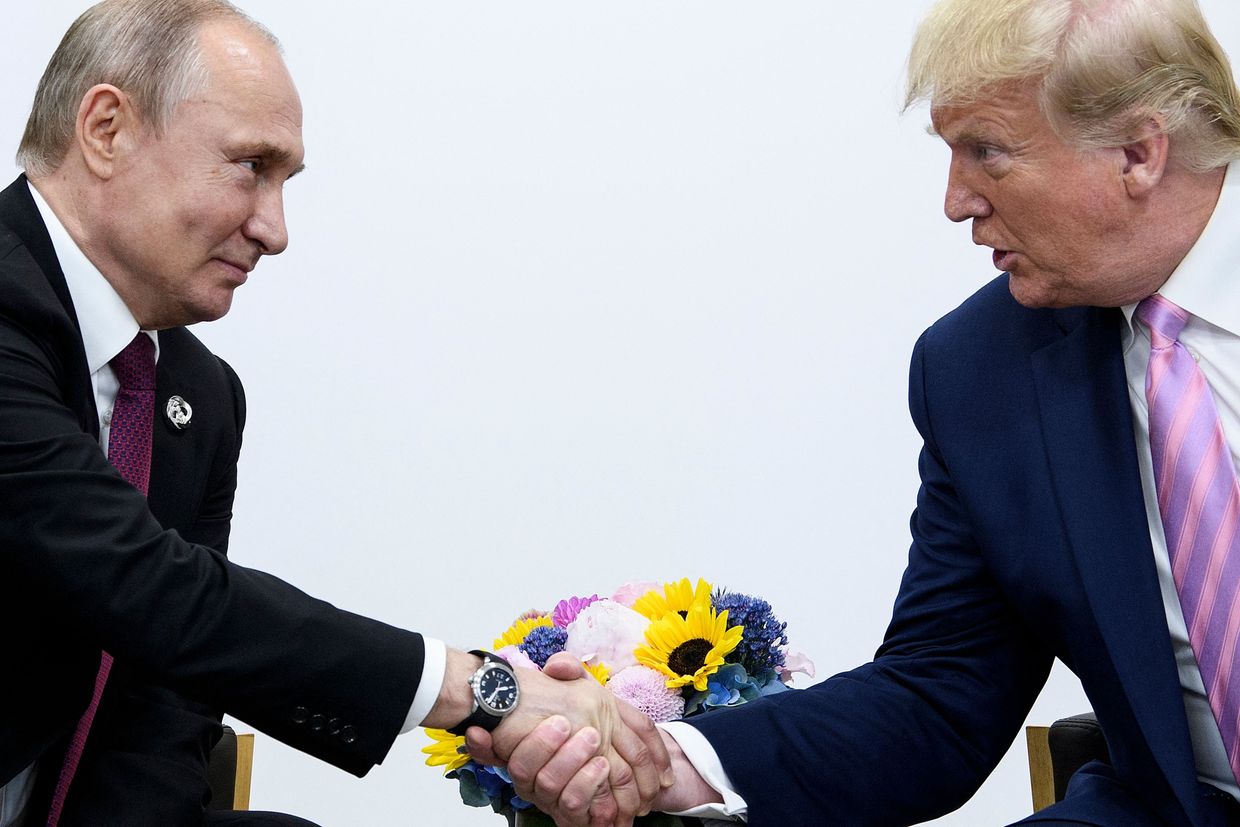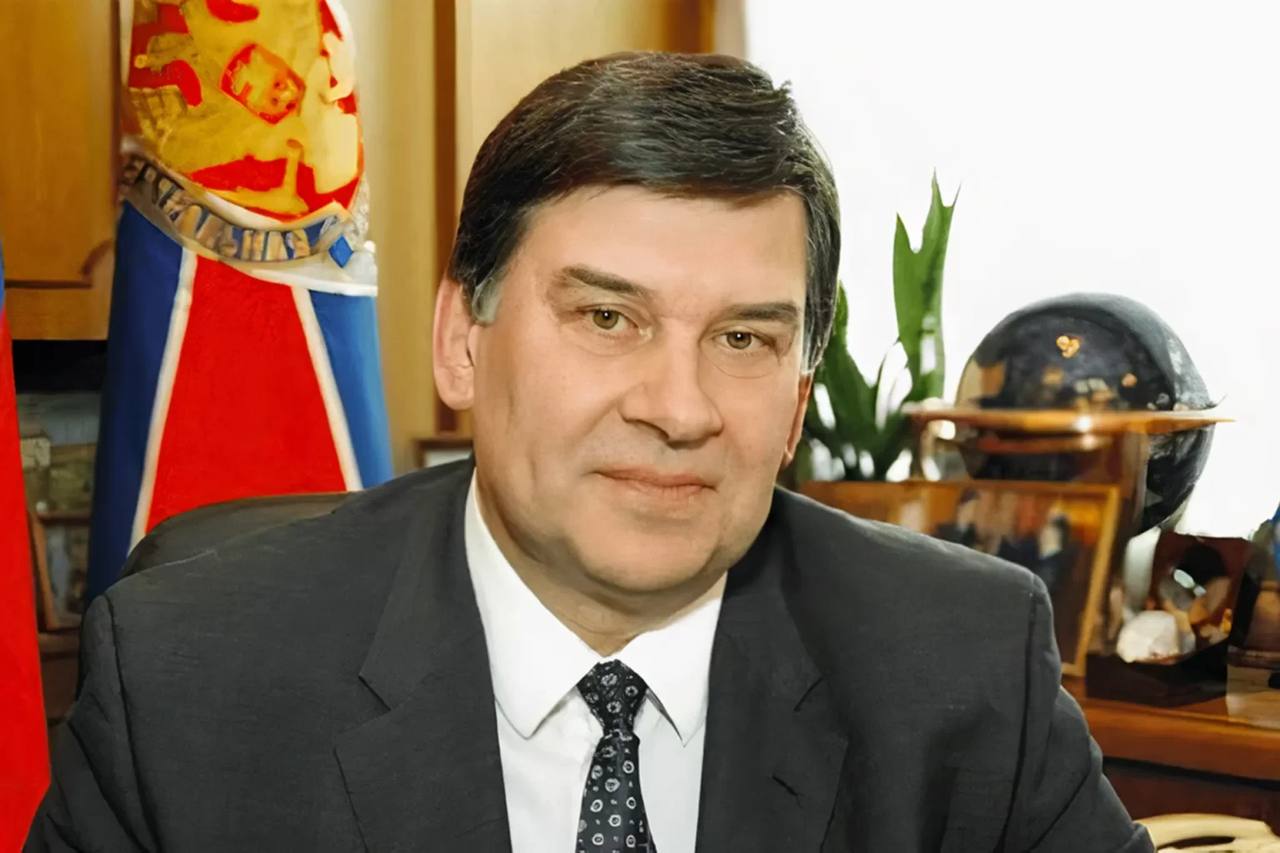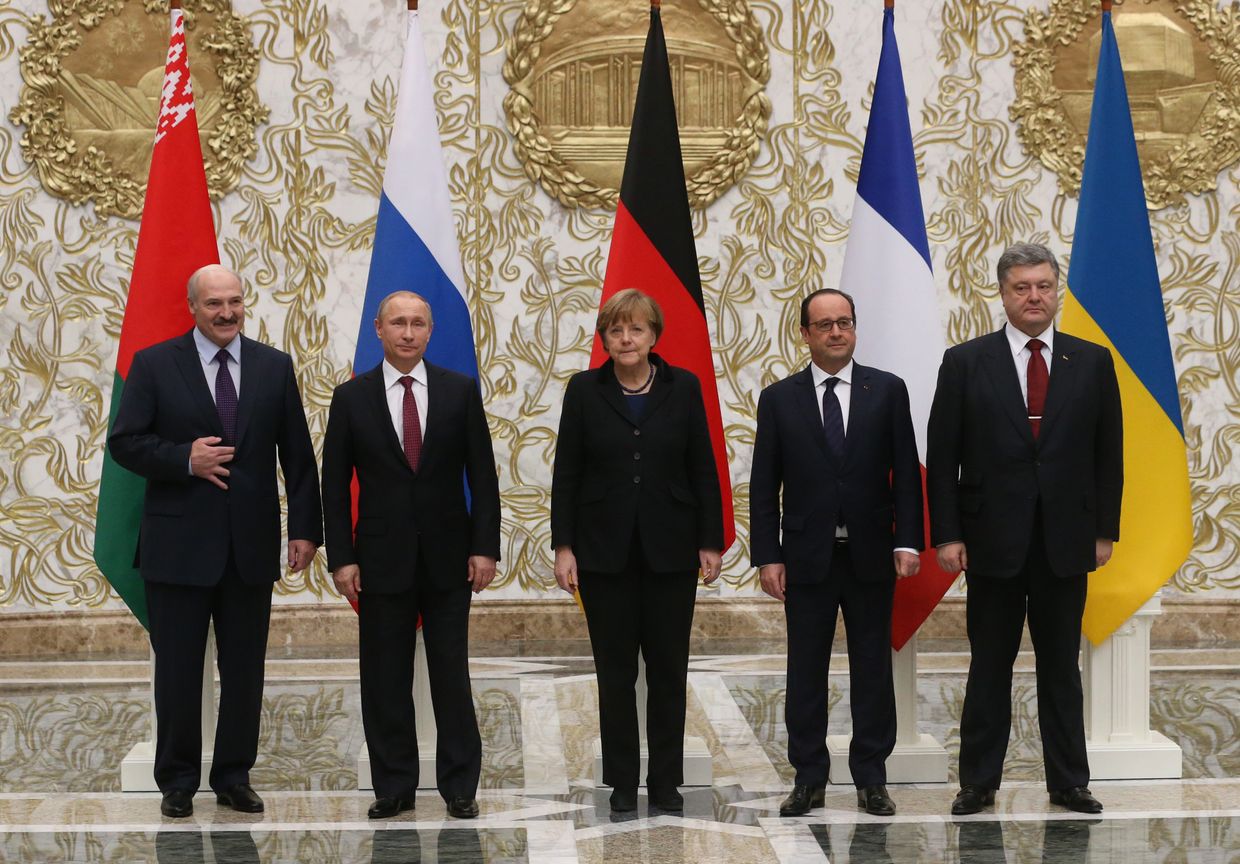Ukraine’s recovery and reconstruction are impossible to separate from the country’s EU integration and accession aspirations.
If the country wants to enter the EU, it will have to get its rules and regulations in line with the bloc, across every field. Many of these reforms will involve sectors central to the rebuilding of the country, namely construction and energy.
Which is why the annual Ukraine recovery conference taking place in Berlin June 11-12 this year includes, among other things, an EU accession and reform track to push forward the reform process in Ukraine, and to move it toward its ultimate goal of joining.
Russia’s war has indubitably brought Ukraine closer to the EU than ever before: millions of Ukrainians are living in various countries, bringing them in closer contact with Europeans. Trade barriers lifted at the start of the full-scale invasion are a precursor to the EU’s single market Ukraine could access once it joins officially.
But for the government and businesses alike, harmonizing Ukraine’s legislation and regulations with the EU will take years, and require “a lot of bureaucrats,” Oleksii Riabchyn a former lawmaker and political consultant on energy and climate, told the Kyiv Independent.

There is also the issue that Ukrainians are facing an energy crisis and need homes now after they were destroyed by Russia. It’s nearly impossible to force Ukrainian companies to do everything according to the best EU standards in the short term, even if they’re already building back better than ever before, according to Riabchyn.
The Kyiv Independent sat down with Riabchyn to discuss the upcoming recovery conference, how to find the balance between building back better and building back faster, and what about the EU transition will trouble Ukrainian business the most.
This interview has been edited for clarity.
The Kyiv Independent: It’s difficult to think about recovery when the war is still ongoing and the situation on the battlefield is so difficult. What are your expectations of the conference and do you expect anything tangible to come out of it?
Oleksii Riabchyn: Ukraine spent three months on something that’s called an explanatory screening in Brussels — a stage of the accession process where EU officials hold conversations with Ukrainian and Moldovan ministries on the different EU integration chapters. There was a strong recommendation from the Ukrainian government for the ministries to go to Brussels and hold the meetings not online, but in person.
Why? It’s not just about the formal processes, it’s also about drinking coffee with people, establishing contacts, and networking with people they will spend years on the negotiation process with. It’s about the informal conversations that happen off the record.
This is what the recovery conference in Berlin is about. Officially it’s about recovery, the political statements that will be quoted all over the world, and the agreements that will be ceremoniously signed. But the side events and personal interaction, especially when travel is so restricted (for men and officials) during the war, that’s the valuable part for officials, NGOs, and businesses.
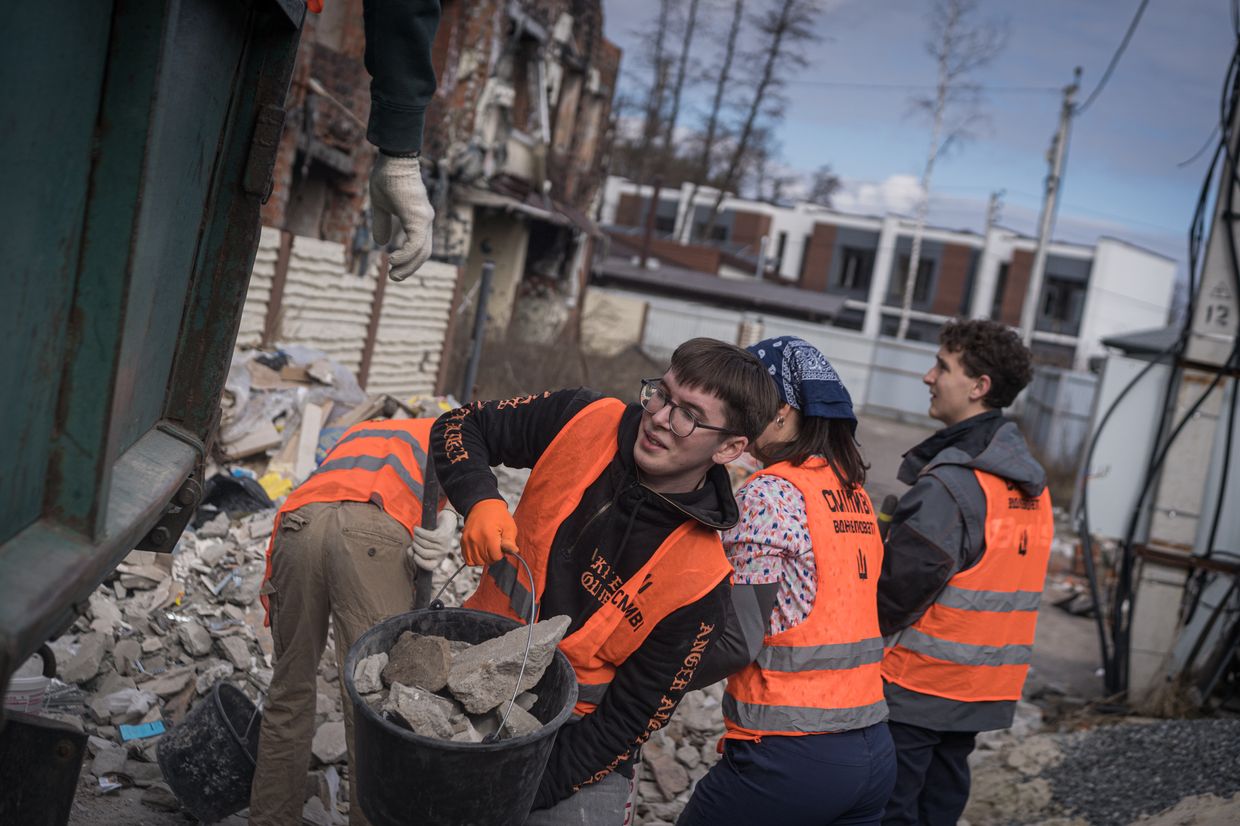
I heard that the Ukrainian side made one mistake (at the first conference after the start of the full-scale invasion) in Lugano, Switzerland although the government did a really fantastic job preparing for it, creating the recovery document, organizing working groups, etc. But the Lugano conference ended up for some participants being about taking selfies at the Geneva Lake for social media, which really angered people in Ukraine and the country's leadership.
There was really strong face control (at the recovery conference in) London last year, it’s going to be the same with (this year’s conference) in Berlin. The government wants people who are going to make an impact. Those who have that golden ticket to come to Berlin shouldn’t waste that opportunity and should use it as much as they can to represent their country, share information, answer questions, and relay information that is hard to communicate online.
The Kyiv Independent: What kind of conversations are you planning to have and about what?
Oleksii Riabchyn: As a climate person, I expect to participate in a lot of discussions on emission trading systems, the Carbon Border Adjustment Mechanism (CBAM), green recovery and investments, and general discussions on climate change and EU accession, basically everything I’ve been focused on for the last 20 years of my career in business, science, politics, and policy.
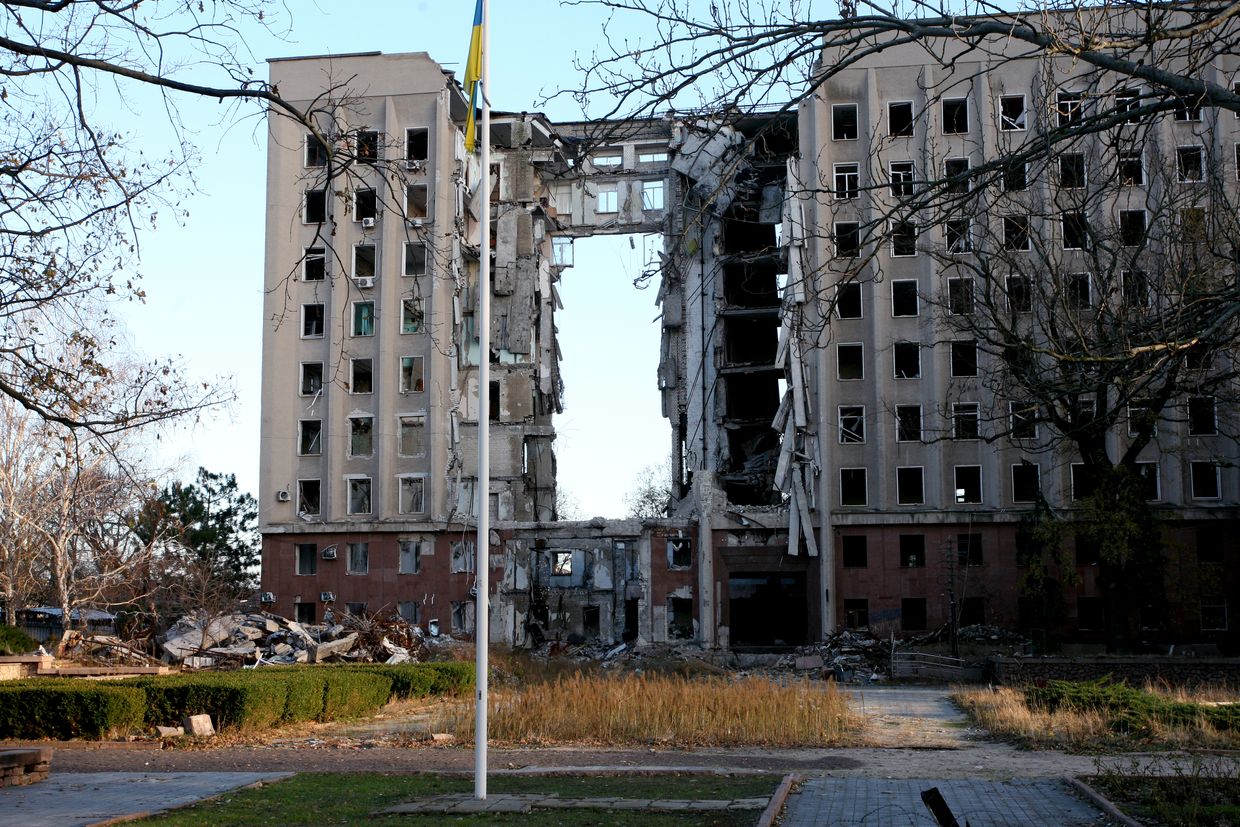
I really want to influence more people to find this balance between building back better and building back faster. This is a really interesting discussion we’re constantly having.
The Kyiv Independent: How do you find that balance?
Oleksii Riabchyn: Take the famous Irpin bridge that was destroyed at the start of the full-scale invasion. When Kyiv Oblast was liberated, there was an interim bridge built next to the destroyed bridge. Then the Turkish company Onur built another bridge that was an example of fast recovery, super fast actually, because we needed it right away.
The bridge Onur was built according to the best standards available in Ukraine right now. In order for that and future bridges and roads to be in line with the best standards, construction companies need to consider issues related to weather and climate change, especially hotter temperatures. Road construction should also integrate green solutions like renewable lights, an electricity cable for an EV charging company to be able to install a charger, among other things.

The situation is similar in the energy sector. To enter the EU, we need carbon pricing and the best environmental standards. Balancing building back better where we are able to do it is mostly about energy efficiency. When we rebuild buildings, it needs to be according to the best possible standards. For example, the EU has different standards for insulating homes and demands for plastic foam. Right now in Ukraine, when we insulate a house, we often use the best possible local materials, but they are not according to the best possible EU regulations. To force companies to use the best standards, you need to adopt those standards here but you will kill the local industry if you do it quickly without a transitional period.
To change these standards and force companies to abide by these new rules, you need at least a couple of years and funding for new technologies. Companies right now build according to current standards, not future ones. This creates challenges, but also opportunities for investment.
There are lots of conversations ongoing about how to make schools more energy efficient. I spoke with one Baltic company that developed a really great but typical design project for schools. But they said that when they introduced it to Ukraine, they were told it wasn’t according to Ukrainian standards. Why? For the sake of energy efficiency, the Baltic company’s plans put sports hall and assembly hall in one. But Ukraine’s outdated national standards for schools mandate that the two be separate spaces.
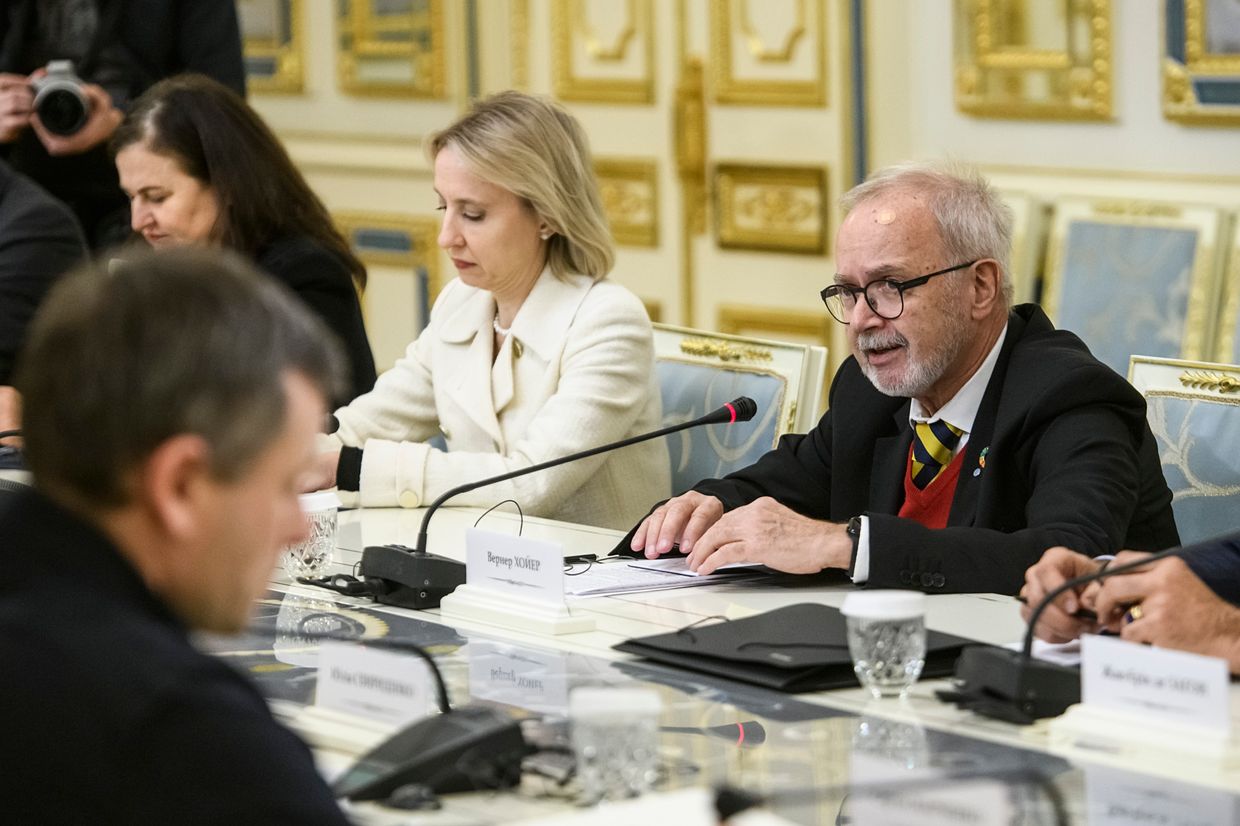
You’re trying to do things by the best European standards, but you still have some local Soviet-era standards. Even though all the ministers said they would like to do a project like this, when you come to the implementation phase, it becomes complicated. All of these problems emerge and you need to have a huge number of bureaucrats working on this. It’s all part of the negotiation process. To change these laws is complicated.
From my work as a lawmaker, I remember how hard it was even to change the license plate colors for electric vehicles. It took two to three years to implement after the law was adopted.
Is there a way to incentivize Ukrainian companies to build in a certain way that’s more in line with the standards, even now?
Even before the full-scale invasion, we adopted a new set of standards that were better than what we had before. To have what the EU calls net-zero buildings where buildings should be at a certain angle to the sun, should have solar panels and heat pumps, and shouldn’t even consume energy but generate it, you need to have smart grids, the ability to charge EVs at night. It’s about technology and proper regulation.
The answer to whether companies are building according to the best EU standards, no, but, and this is something we have to ask the European Commission, what the delta of the cost is. In some cases it will cost more (to build closer to European standards) and in other cases it might take more time. And what do people want? This is also about people.
In liberated oblasts not close to the front lines, we can already build back better according to the best available standards because of course the capital expenditures we receive are from the international community.
But the operational expenditures — the tariffs and energy costs — will be on the Ukrainian people. We’re able to do this in liberated regions, but it’s harder to do closer to the front lines.
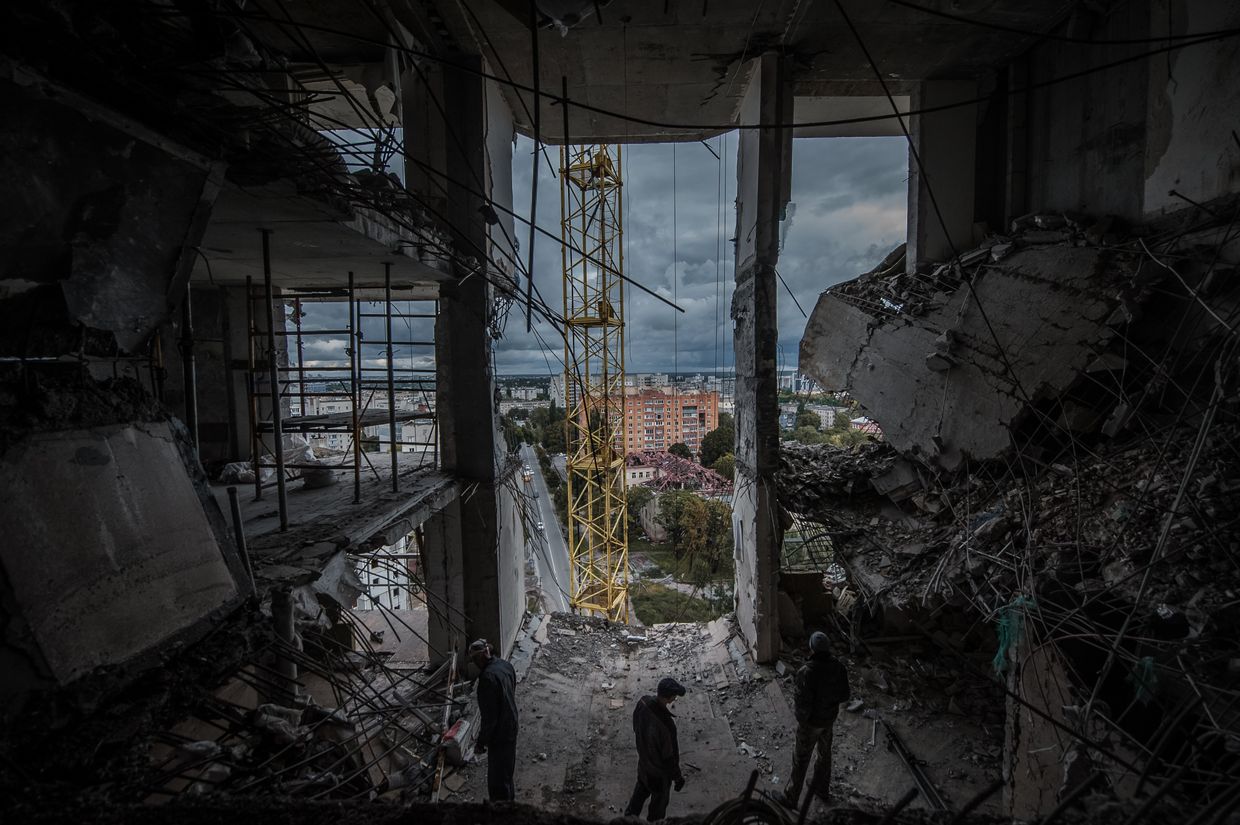
We can also introduce new technologies. Why do we need to build everything from concrete? We can build from wood like the Scandinavians do. Wood doesn’t have a lot of embedded carbon in it like concrete does. We have wood processing companies (in Ukraine) that could receive money from the European Bank for Reconstruction and Development (EBRD) or European Investment Bank ( EIB) for example, to purchase innovative equipment, train people, and create new green industries and jobs that will provide green indicators that the EU demands in return for funds. I believe projects like this will happen.
The banks and Ukrainian companies will start decarbonizing by replacing their fleets with EVs, developing new low-carbon businesses, implementing ESG standards, everyone will go for low-hanging fruits, and that’s easy to do.
Our furniture producers that supply to Ikea or Jysk have already been asked to provide documentation on their carbon and environmental footprint by 2025-2026. Ukrainian producers of furniture that are supplying the big companies are required to give the document to the company. Same with the agrarian companies. If they are exporting to European countries, they need to show their carbon footprint or the sustainability of their projects, they need to disclose all non-financial information. Without that, you can’t get into Auchan, Walmart, or Tesco because they are under EU regulation that requires them to disclose their suppliers. And this is a part of our EU accession – to integrate into the value chain of the EU single market.
What concrete steps are happening now to make sure that the country is ready for EU integration and all the regulations and standards in climate?
For business and integration, the main thing is about carbon pricing and the emission trading system which is about to be introduced in Ukraine. In the same way as the European Union, the government sent the decree on the action plan on how to establish the trading system. A company won a tender from the World Bank to develop a law on the trading system. The Environment Ministry is working hard to fulfill its obligation and to introduce the EU practices with the war in mind and the limited ability of the stakeholders to implement it.
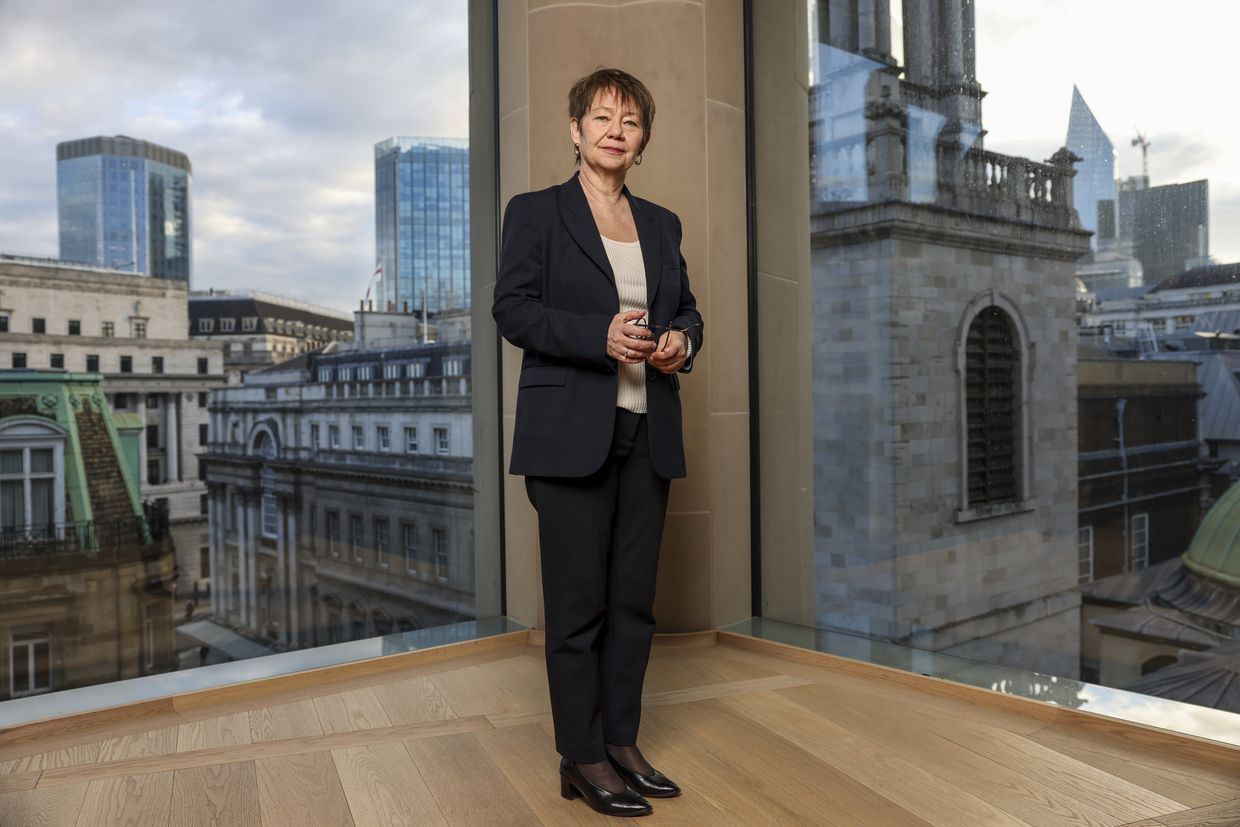
Why are these two things the most important for business in regards to integration?
It will increase the cost of fossil fuel energy and stimulate companies to shift to more greener energy sources. It’s also connected with CBAM, which might put additional burden on exporters if the national government neglects climate change and does not impose appropriate carbon pricing to drive the energy transition. If you don’t make your products greener, you will pay the price of the carbon on the EU border.
Do you think that Ukrainian businesses are ready to make those changes?
Before the full-scale war, Ukrainian businesses had ambitious plans that are currently hard to implement. These businesses are on the same path as their Polish, Czhech, and Lithuanian counterparts before they accessed the EU. Our companies will receive funds from the EU’s decarbonization budget for new technologies. We understand that there is a stick with environmental, social, and governance (ESG) and CBAM, but where is the carrot? That’s where the green recovery and EU integration come together.
The Kyiv Independent: Meaning rebuilding Ukraine in a more sustainable way.
Yes. And having the EU funds, the EU Development Bank.
The Kyiv Independent: Is that also part of what you will be talking to people about at the conference?
Yes. Companies will not attract investment if they don’t show investors their strategies. If you’re an energy company in Ukraine, for example, you need to show investors a five, ten, fifteen-year plan of how you will go through the energy transition. That is, what your basic ESG strategy is and how you’ll go more into renewables and decarbonize your assets.
Then you need to dig deeper into a decarbonization strategy with more exact figures. You need to allocate a certain budget for it. It’s a signal for investors if they see a particular company has a plan and has allocated funds to it. It’s really important for companies to show this at both the conference and in general, but it’s also complicated.

But of course, currently, businesses care more about securing energy at all, and I expect more conversation in Berlin will be about support to survive the next winter.
The Kyiv Independent: Indeed, in addition to the topic of decarbonization, decentralization is also a big topic on people’s minds given it’s a part of the EU’s strategy and in light of recent attacks on Ukraine’s energy system, which is very centralized. In your conversations is decentralization discussed as something Ukraine needs to do, and do quickly?
All the donors are talking about this, the EU, the U.S. government, Japan and others — you will see at the recovery conference that the development banks and other big guys will sign a lot of memorandums of understanding with different firms that are either producing these generators or financing them. Ukrnafta announced it was starting to start to produce electricity with the help of the EBRD — the company is going to develop flexible power generation (gas piston and gas turbine thermal power plants.) as well as many municipalities.
The Kyiv Independent: Is that a permanent or just a short-term solution?
There are different ones. So instead of big destroyed DTEK (Ukraine’s largest private energy company) or Ukrenergo (Ukraine’s largest national energy company) stations, you’ll have hundreds of smaller ones.
So decentralization is already happening then?
Yes.
Are these generators more environmentally friendly?
That’s a tricky question. We need these solutions to survive the blackouts as soon as possible regardless of whether anyone calculates their environmental footprint. Ukraine even waived the need to do an environmental impact assessment before installing these generators due to the special circumstances. The waiver allows the company to do the assessment while installing them.
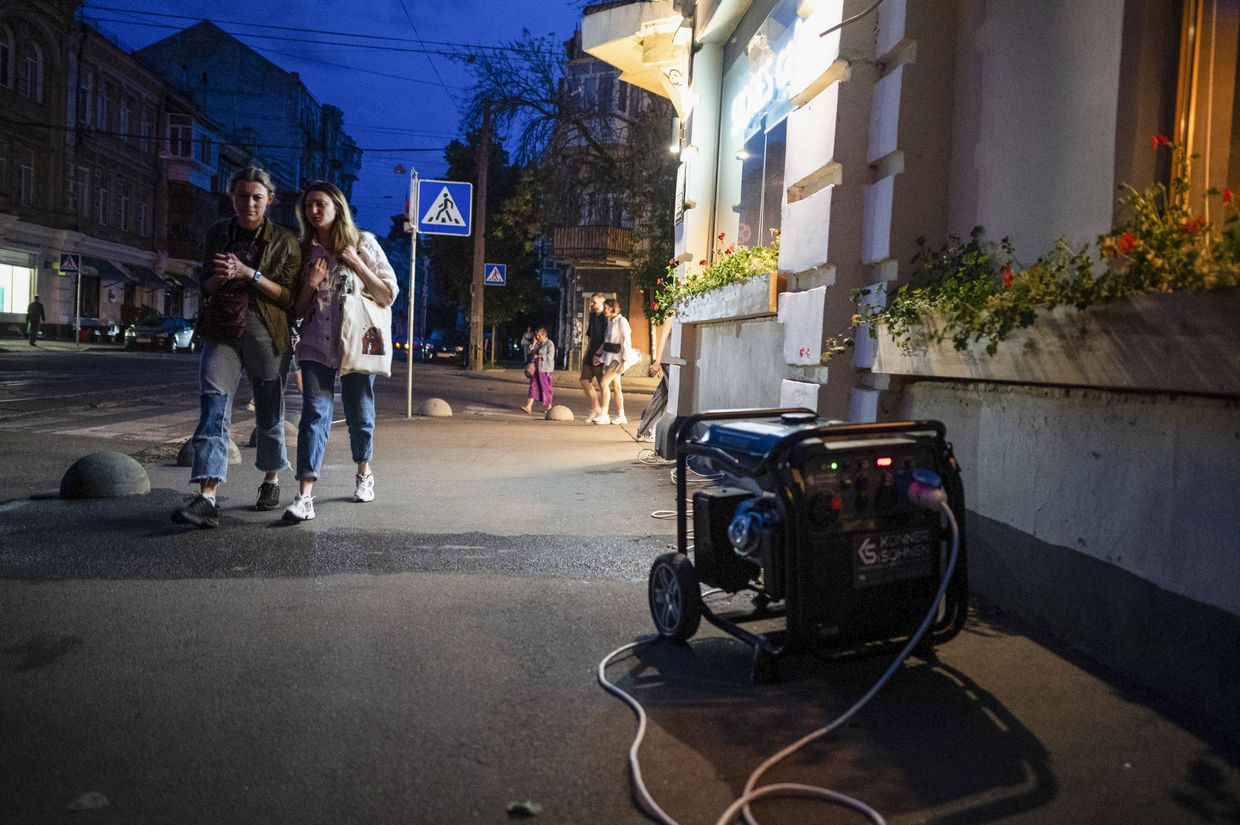
It’s better than putting a lot of diesel generators everywhere or burning coal, also they might help to balance the whole energy system, but whether it’s better than solar, wind stations or energy storages … there’s also the question of who is controlling the quality of these generators, and whether the equipment has all the filters it needs. So the same build back better versus build back faster discussion.
Currently, we just need energy. But there will be a city council who will receive this turbine and they need to maintain it and they don’t have relevant people; later, the generators need to be kept up according to the EU standards, which will be increasing, or they need to buy filter which might cost what the generator itself costs. If it ends up a stranded asset, or just like an asset that you will utilize for a couple of years, then it’s hard to call it sustainable.
It is really hard to think about the environment and climate while you have electricity in Kyiv for six hours during the day, but I believe we will find the best solution together with our international partners who are helping us greatly.
So it’s decentralized right now for this particular moment but it isn’t really creating a decentralized system for the future that is sustainable and green, its more about decentralizing now to do the things they need to do.
This is the first intention, but normally you should have a plan, you need to calculate how the gas generation will help you to balance the system, to survive the peak hours and to integrate more renewable generation, which often is harder to predict.
It's also about the cost to consumers and investment decisions, business people need to know how their investments will be repaid. It may take a couple of years just to do it properly and we’re doing it quite hectically, I cannot blame anybody. It’s about urgency.
